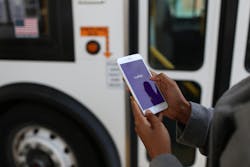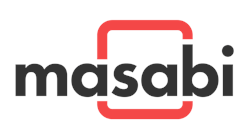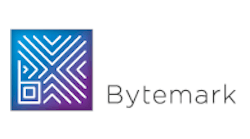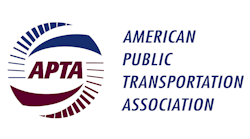Mobility as a Service has been the big buzzword the past year. Smart cities connecting communities with the integration or IoT technologies to bring benefits to residents and tourists has been at the forefront of city plans and leveraging the technology available to help people navigate communities while offering all options on demand is where we’re headed. That’s the plan, at least, but we have a long way to get there.
We looked at data from several surveys as well as some of the latest projects in North America and abroad to get a state of the industry, as well as what to expect in the near-future and beyond.
Fare collection provider Masabi surveyed our readers the past two years and Head of Marketing James Gooch said they haven’t seen any surprises from one year to the next.
Responses show expected growth in mobile payment and smart cards. Speaking in broad terms, Gooch said in Europe there’s been growth in smart cards and adoption of EMV contactless credit cards and in the United Kingdom, more account-based ticking based on contactless cards taking place than in the North American market. In Asia, there’s more of an interest in barcode-based payments.
Definitions
Open Payment System: Using contactless bank cards, smartphone NFC, or other tap technology.
EMV: Europay, MasterCard and Visa
These international companies joined their efforts in development of the global standard for credit and debit payment cards based on chip card technologyNFC: Near field communication is the technology that allows two devices to talk to each other, enabling contactless payments.
NFC applies to how devices communicate while EMV applies to payments made with contact and contactless chip cards or with a mobile NFC device emulating a contactless chipc card.
ID-/Account-Based Ticketing: As defined by the Smarcard Alliance – The transit fare collection system architecture that uses the back office system to apply relevant business rules, determine the fare, and settle the transaction.
ACI Universal Payments surveyed transit riders in the nine largest metropolitan transportation systems in the United States for its 2016 ACI Worldwide Mass Transit Payments Survey to assess rider attitudes. It was interesting to see the importance of cash for payment, accounting for about 50 percent of sales
Solving Mobility Challenges
By leveraging big data, cities are looking to reduce congestion, improve travel times, and improve air quality. Real-time information enables people to make more informed commuting decisions and provides valuable travel data to help in planning future mobility patterns.
Multi-Modal Trip Planning
Go Denver lets commuters look at trip planning with various mode options and the accompanying carbon footprint of the journey. While there is no single technology — yet – that can integrate the fare payment and collection that is the next step.
MassTransitmag.com/12353534
A Seamless Journey
In Helsinki, Finland, residents have the option of Whim, a service of MaaS Global, which combines multiple transportation options in one easy-to-use app. The all-inclusive app offers a pay-as-you-go or monthly option for residents to have access to any mode of transportation at their fingertips.
For the Whim Unlimited option, residents have access to unlimited public transportation, taxi use, car rental or (starting soon) bike rental with one easy payment subscription.
At Tao Orléans Métropole, the transport provider in Orléans, France, lets passengers use Keolis’ “Plan Book Ticket” app, which offers planning, booking, purchasing fares and validating fares through a smartphone. The different functions are available for use in on other networks, but Tao is the first to incorporate all of it.
“Plan” combines all modes to let the commuter pick the best option. “Book” is an online store connected to the network’s ticketing system. The app features the M-ticket payment technology, developed by Kisio Digital in partnership with Masabi. “Ticket” lets riders use their smartphone to validate their ticket.
The app is the first to use Masabi’s JustRide SDK for mobile ticketing.
MassTransitmag.com/12362282
Going Mobile
With most riders having a smartphone in hand, going to mobile payment offers ease to the consumer and lower costs to the agency. Only 14 percent of respondents didn’t have any plans for mobile ticketing in the near future.
The Best Practices feature (pg. 27) in this issue addresses things you need to consider if you’re implementing mobile payment and Dallas Area Rapid Transit Executive Vice President, Chief Financial Officer David Leininger said the first thing you need to answer is, why.
Other questions he says to consider:
- Does a public transit agency really need to offer a mobile ticketing and payment option? Of course it does.
- Is there a logical limit to the size of the agency that would benefit from a mobile ticketing and payment offering? No, not really.
- Is it a cost-effective, affordable option, even for a small agency? Yes, unless you cut a poor deal with the vendor.
- Can I develop the capability in-house? Yes, but it will never be as feature-rich as third-party solutions and most likely will not be able to keep up with the new version releases of the mobile phone operating systems.
- Can the agency begin with a pilot and then launch a full deployment later? Yes, but the agency risks going through two procurement exercises versus one. Further, it cannot assure the vendor participating in the pilot will be the successful bidder in the full deployment.
- Should the agency limit the products available for purchase to special events and periods of time versus putting the full range of product types on the app? No. While a limited array of products can be the approach, it reduces the benefit of the mobile offering functionality to the rider, forcing the rider to use multiple methods when one would suffice, it still requires roughly the same amount of staff support and significantly reduces the transactions over which the capital investment can be amortized.
MassTransitmag.com/12385383
Mobile Payments for All Size Agencies
Developed by Bytemark, the MyDART app lets Des Moines Area Regional Transit Authority riders use their smartphones to pay for their bus fare. By using the MyDART app, these riders no longer have to keep track of a printed pass and can save time by purchasing bus passes anywhere, anytime on their smartphone.
When DART installs new fareboxes in summer 2018, riders will be able to scan the MyDART app at the farebox instead of showing activated passes to the bus operator. In the future, a trip planner and real-time bus arrival information will be available in the MyDART app.
MassTransitmag.com/12375598
Capital District Transportation Authority in Albany, New York, upgraded its fare payment to make the passenger experience more convenient. Launched in January 2017, CDTA’s Navigator system is a reloadable smart card and mobile app, offering riders convenience, security and savings.
CDTA and Genfare worked together to develop a customized, user-friendly web-based passenger interface.
MassTransitmag.com/12370832
The Hop Fastpass
Commuters in the Portland-Vancouver Metropolitan Area can use a mobile wallet or any contactless bank card to tap and ride on TriMet, C-TRAN and the Portland Streetcar.
INIT’s MOBILEvario powers the account-based, open payment system and manages and processes fares in real-time, recognizes and processes revenue sharing, as well as manages accounts and automates reconciliations for all three agencies. INIT developed the system using open architecture APIs so other partners could be easily incorporated.
TriMet partnered with Google to make the Hop Fastpass the first virtual transit card available in Android Pay. Beta testing started in December, giving a select group of testers the opportunity to load a virtual Hop card in Android Pay, allowing them to tap their phones to pay their fares.
MassTransitmag.com/12362197 · MassTransitmag.com/12386556
Creating an Integrated Journey
The Los Angeles County Metropolitan Transportation Authority recently awarded a contract to Cubic Transportation Systems to deliver an integrated mobile app in support of the TAP regional contactless fare system. TAP links 24 transit agencies in the Los Angeles region.
The TAP account management will be integrated with Metro’s taptogo.net website, allowing users to add to their TAP card, as well as other services from a single, regional account, including bike, ride or car share and parking, which can be booked as part of an integrated journey plan from the app.
MassTransitmag.com/12389045
Definitions
API: Application Programming Interface – An interface that allows software programs to interact with each other.
SDK: Software Development Kits – SDK is a set of tools that can be used to develop software applications targeting a specific platform.
More often than not, an SDK contains an API. APIs are built to allow communication between applications; SDKs are kits that allow developers to create systems and develop applications.
Personal Service
Rail passengers in East Anglia who have a query while using a ticket machine can now press a button which will put them straight through to a real person who can help them buy tickets and find the best fares.
Greater Anglia is the first train operator in England to roll out Scheidt & Bachmann’s FareGo ViTA “virtual ticket agents” across all its existing ticket machines, so that passengers can connect to a real person — via an audio link — who can offer help.
A two-way audio connection is established so that the customer and ticket agent can talk. Greater Anglia’s initial pilot phase of the machines was carried out from 8 September to 29 October 2017, and received over 8,000 calls, 250 per day on average. 30 percent of these came from London Liverpool Street station. There will now be a 12-week testing phase as the service beds in across all Greater Anglia’s ticket machines.
MassTransitmag.com/12387518






